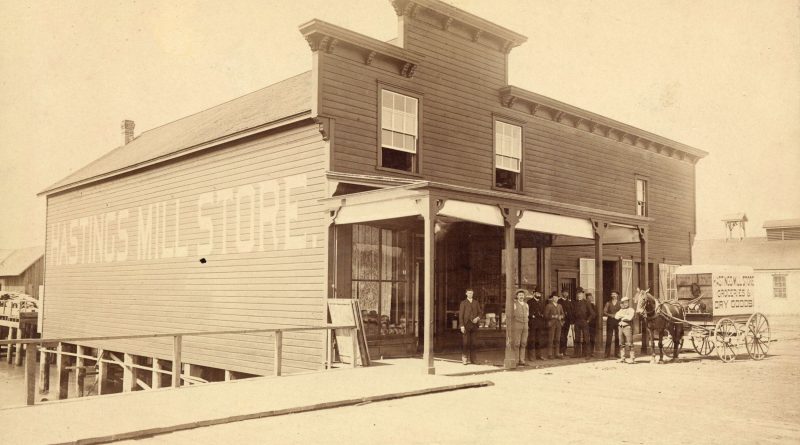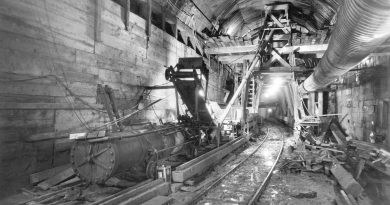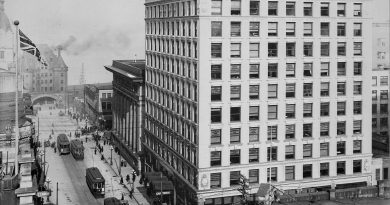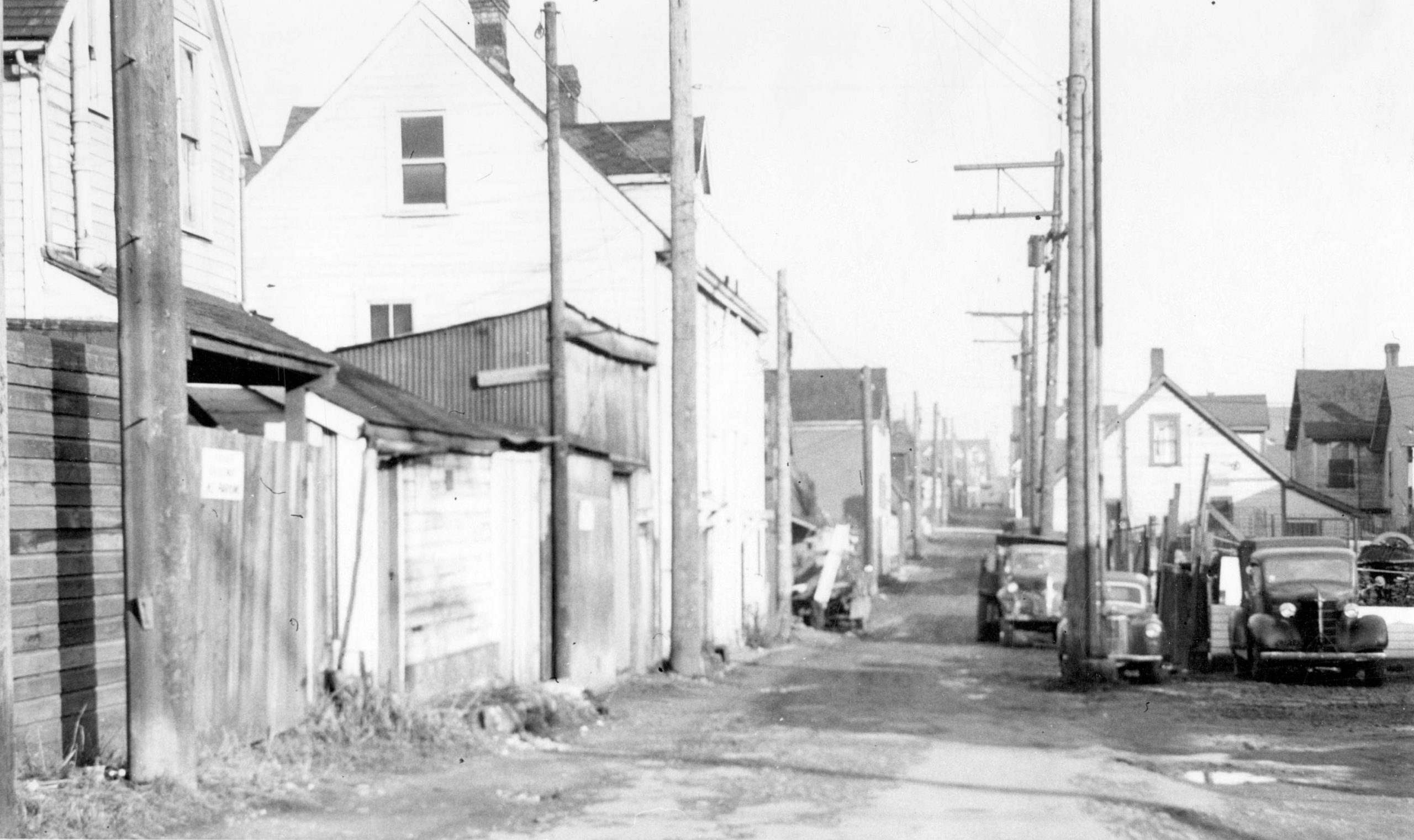The Hastings Mill Store
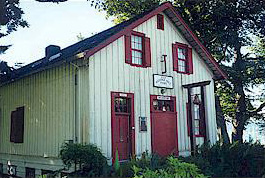
(Native Daughters of British Columbia)
This year marks the 78th anniversary of one of the more unusual moving jobs in Vancouver—when a barge took the city’s oldest building from its location at the foot of Dunlevy Street and, in the words of the archivist of that day, “tenderly transported it across the water to this beautiful park and set it down again, for safekeeping, among the flowers.”
The building was the Hastings Mill Store and its new home was Pioneer Park, at the north foot of Alma Street. It was July 29, 1930, and the store (now a museum) has been there ever since. (The park’s original name was Alma, like the street, but in tribute to the museum its name was changed in 1940 to Pioneer Park.)
Its 77 years on the waterfront at Alma were preceded by more than 60 years on the waterfront at Dunlevy. The store had been built as an annex to Stamp’s Mill, which began operations in 1867, two years later than scheduled because of a delay in the shipment of certain machinery. (It became the Hastings Mill in 1870 after Stamp ran into financial problems and had to give it up.)
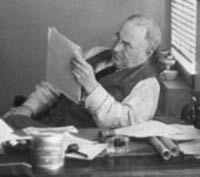
Major J.S. Matthews
[Photo: City of Vancouver Archives Port P567]
“It was usual,” one of the early storekeepers, Calvert Simson, reminisced in 1950, “for a company to start a store to supply the men with tobacco, etc., during construction. The Hastings Mill Store started about 1867 or ’68 . . . It carried a general line of groceries, tobacco, cigars, pipes, men’s suits—at first brought out from England, with the pants cut so high one hardly needed a vest—overalls, underwear made of flannel all wool, in red and blue colors, the red in big demand as a supposed cure for rheumatism . . . a line of patent medicines, such as Thomas Electric Oil, Painkiller, Peruna, Pain’s Celery Compound—these latter two, being 75 per cent alcohol, were in much demand in the camps . . . scented hair oil, red rouge for Indian face coloring, liniments, cough mixtures and other patents too numerous to mention.”
Simson became storekeeper at Hastings Mill in 1884. He was at the store when the little city burned to the ground in June of 1886. Almost miraculously, the store was spared—it was one of a tiny handful of buildings that survived. But it was touched by the tragedy: a woman and a small boy, perhaps her son, had been taken out of a well in Gastown where they had tried to escape the flames.
“They carried them down to the sawmill,” Simson remembered. “She and a boy had got down in a well and the hot fumes burned the skin off her. I got a bottle of carbolated oil from the store and then took scissors and slit her dress open right to her chin, right up the middle of the bosom. She was lying on a mattress. I got lint, soaked it in the oil and wrapped it around her. The boy got better but she died.
“On the day of the fire, people were clamoring for food so the store was opened and not closed night or day for three days. All the bread and canned meats were soon cleared out but there were lots of soda crackers, hardtack and cheese. One man told me he never wanted to see another cracker as long as he lived. The rats were so bad around the store we had to tin it to stop them from destroying the flour we had stored.”
In the late ’20s, as demolition of the old mill and all its surrounding buildings was carried out (the mill itself came down in 1928) the Native Daughters of British Columbia, Post No. 1, decided the store should be saved. They began a campaign to raise $10,000 to rescue it from the sledgehammer—and were successful. On July 29, 1930 the little old building was towed on a barge to Alma Park, at the foot of Alma Street.
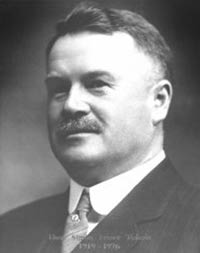
[Photo: www4.agr.gc.ca]
A contemporary newspaper report says: “Several score pioneers who had gathered to watch the historic building towed to its last resting place cheered as the tug Alert swung the huge scow on which the structure was carried toward the beach. Under direction of Capt. Charles Cates, the scow was beached at high tide.”
In January of 1932, with Premier S.F. Tolmie officiating, it opened as a museum. (Confusingly, our files also show a 1931 opening ceremony, this time with Lt.-Gov. Robert Bruce officiating.)
Volunteers of the Native Daughters of B.C. act as guides in the museum which is open Tuesday through Sunday, 1:00 to 4:00 p.m., and weekends in the off-season.. The Native Daughters were formed in 1919, their objective being to pay tribute to the pioneers and history of the province.

